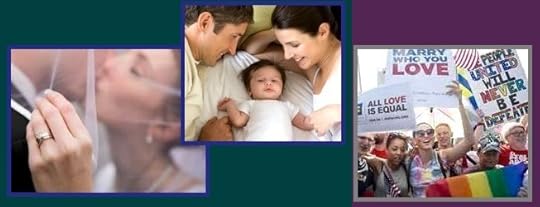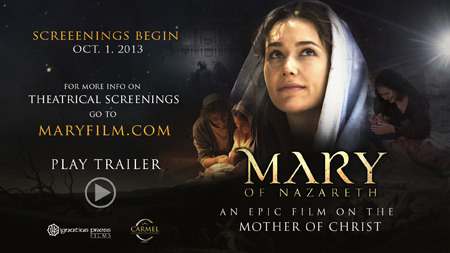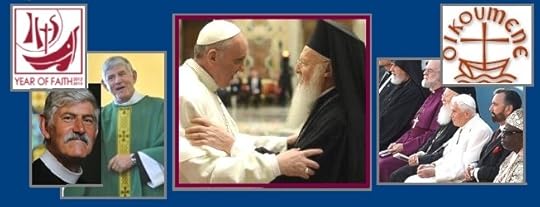Carl E. Olson's Blog, page 132
September 13, 2013
Defining the Obvious
Defining the Obvious | Deacon Tracy W. Jamison, Ph.D.
| HPR
The U.S. Supreme Court’s landmark decision to strike down Section 3 of the federal Defense of Marriage Act as unconstitutional is an example of how basic definitions logically determine what is regarded as morally just and what is regarded as morally unjust.
It is not always easy to define the
obvious. To define something requires us to specify its essence by
indicating its form and matter. A definition must specify a form by
indicating a specific difference within a genus. Thus, the endeavor is
often considered to be scientific or philosophical. It generally
requires some familiarity with basic logic. Definitions delineate the
extensions of terms which signify the specific natures of things. A
given description is a true definition if, and only if, it
distinguishes, all and only, the members of a kind. If a particular
proposition fails to distinguish, all and only, the things of a kind,
then it may be an adequate description, but it is not a definition.
Activities and relations can be defined as readily as substances can. To
take an example from Plato’s Sophist, the activity of angling
can be defined as the activity of attempting to catch fish by means of a
line and a hook. Thus, the proximate genus of angling is the activity
of attempting to catch fish. There are other ways, besides angling, to
catch fish. The specific difference of angling is the use of a line and a
hook. If we are not using a line and a hook, then we are not angling.
And every instance of using a line and a hook, in the attempt to catch
fish, is some form of angling.
A definition of an activity also
indicates the intrinsic purpose of the activity in accord with its
essential ends. The intrinsic purpose of the activity of angling, for
example, is to catch fish. A good angler is someone who has ability and
success in catching fish specifically with a line and a hook. Thus, the
specific perfective good of angling is the capture of fish with a line and a hook. The delectable
good of angling, by contrast, is the specific pleasure that attends the
activity. This pleasure is greatly enhanced whenever the activity
attains all of its essential ends. The delectable good of
angling, however, is not what makes someone an angler. A person can be a
good angler and experience no pleasure at all in the activity. And a
person can experience part of the specific pleasure of angling without
actually catching any fish. The perfective good, not the delectable
good, is what makes an activity to be the kind of activity it is. Thus,
a person is an angler only insofar as that person is engaging in an
activity that is intrinsically ordered to catching fish with a line and a
hook. This specific kind of activity is what makes a person an angler,
even if the person unfortunately fails to catch any fish.
Societies often find it necessary and
prudent to regulate certain kinds of activities. Any law that regulates a
given activity presupposes a definition of that activity. In our
society, for example, there are certain laws that pertain to the
activity of angling. It normally requires a license. The license to
angle does not permit the activity of catching fish with nets, dynamite,
etc. Angling must be done in such a way to hook fish in the mouth,
rather than snagging them, etc. Angling is permitted only at designated
times and places, and so on. Like any other kind of human activity,
angling has an essence that exists prior to its definition, and prior to
any laws that regulate the activity. The possession of a license to
angle is not what makes a person an angler. A person is an angler only
insofar as that person actually engages in the activity of angling in
accord with its essential ends. And a person is a good angler only
insofar as that person is actually able to catch fish by means of a line
and a hook.
Now suppose that in our society there
were significant social benefits formally attached to angling that were
not also attached to, say, kite-flying, and similar recreational
activities.
Parish Mission Statements and Authentic Ecclesiology
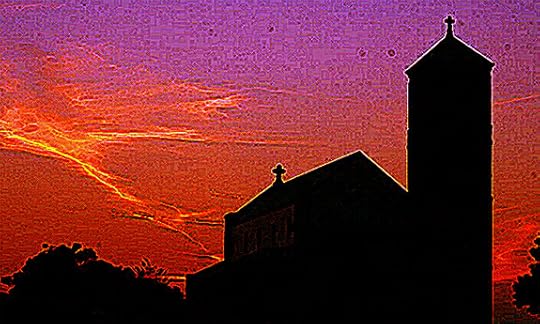
Parish
Mission Statements and Authentic Ecclesiology | Brian Jones | CWR blog
Last
Sunday, I was skimming through the bulletin of the local parish that
my wife and I regularly attend (not, of course, during the homily).
Usually, I find myself being drawn to seeing what sorts of ministries
a parish offers, since it provides a unique glimpse into the identity
and self-perception of the parish.
My
wife called my attention to the front cover of the bulletin, asking
me what I thought of the “parish mission statement.” It reads as
follows:
We,
the people of St. X Parish, are a joyful Roman Catholic Community. We
believe Our Lord calls us beyond membership to become His true
disciples and live as one body in Christ. Therefore, we choose to use
our unique gifts to build a welcoming, interconnected gathering of
the faithful that will be a beacon, a light to the world”
(I have intentionally left out the actual name of the parish).”
I
had not read that small and condensed paragraph before, and so I was
curious to find, upon reading it numerous times, that several telling
points were hiding in it.
Before mentioning the three
particular points worth analyzing, I want to provide an explanation
as to why a critical assessment of something like this is necessary,
and cannot not simply be viewed as nit-picking. The first point
follows from what the above quote actually is—a mission statement,
a quasi-normative theological outlook that seeks to publicly profess
its identity and the reason for its existence. What underlies the
statement is the very nature of the Catholic Church (universally and
particularly); consequently, it is essential that we get this
correct, for our sanctity and eternal salvation is at stake.
Secondly, a view such as the one listed not only undercuts a proper
ecclesiology, but also demonstrates a rather ambiguous understanding
of the Church’s salvific and missionary character. Ultimately,
these two components are the effects of what I consider to be a
severe lack in the substance and explanatory power of traditional
Catholic theology, and ends up positing words or ideas that lack any
deep connection with the Church’s philosophical, theological, and
spiritual tradition.
The
most simple and effective way of breaking down this paragraph is
through a division
into
three parts.
The
first division comes from the opening of the paragraph: “We,
the people of St. X Parish, are a joyful Roman Catholic Community.”
September 12, 2013
Bring the new epic film, "Mary of Nazareth", to a theater near you!

Mary on the Big Screen!
We are very excited to announce Mary of Nazareth,
a major new epic feature film on the life of Our Blessed Mother, is
available for sponsored theatrical screenings across the country after
October 1, 2013.
MARY OF NAZARETH vividly captures the essence of Mary’s profound faith
and trust in God amidst the great mysteries she lived as the Mother of
the Messiah. It shows her compassionate humanity and concern for others,
and the deep love that she and Jesus shared for one another. This film
also underscores her special role in God’s plan for our redemption, her
unique relationship with Christ, and the tremendous suffering that she
endured in union with his passion and death, as well as her serene joy
at his Resurrection.
Father Donald Calloway, MIC, author of the recently released Under Her Mantle,
praised the film, saying, “Without a doubt, this is the most stunning
portrayal of the Virgin Mary on film! It will make you want to love her
more than ever. An absolute masterpiece!”
Visit the website www.maryfilm.com to see
the two sneak peak clips we will be unlocking each week up to the
film's release giving you a one minute taste of this powerful film!
To learn more about the process of hosting a theatrical screening,
email screenings@carmelcommunications or call 1-770-591-0045 to begin
the process TODAY!
Please like and share the Mary of Nazareth Facebook Page with friends!
September 11, 2013
President/CEO of Ignatius Press on 3 basic issues in Catholic education
In an commentary piece, "What Makes Catholic Education Catholic?", published recently on the National Catholic Register site, Mark Brumley, President and CEO of Ignatius Press, asks three questions about the mission and nature of Catholic education:
“Catholic education” seems like a known commodity. How can we have
serious questions about it, given the array of Catholic schools in this
country? Surely, the history of Catholic education has clarified the
matter. Unfortunately, things
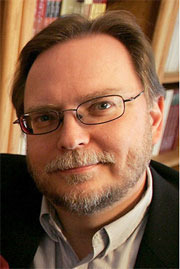 aren’t so simple.
aren’t so simple.
Recently, Kolbe Academy-Trinity Prep — a classical, liberal arts K-12
school in Napa, Calif. — asked me to participate in a faculty in-service
discussion. Given that it was the start of the school year, I took the
opportunity to re-examine the mission of Catholic education.
There are three basic issues in Catholic education: What is education? What is Catholic education?
And how do the “education part” and the “Catholic part” fit together?
This last question is what I call the “two friends keeping each other
honest” part of Catholic education.
What Is Education?
The Second Vatican Council’s Gravissimum Educationis (Declaration
on Christian Education) insists that “a true education aims at the
formation of the human person in the pursuit of his ultimate end and of
the good of the societies of which he as man is a member and in whose
obligations as an adult he will share” (1).
The same document speaks of helping young people “to develop
harmoniously their physical, moral and intellectual endowments,” and it
insists that because young people need moral formation, “together with a
deeper knowledge and love of God,” public authority should make sure
they get what they’re entitled to.
The Vatican’s Congregation for Catholic Education defines a school as
“a place of integral formation by means of a systematic and critical
assimilation of culture” (“The Catholic School,” 26). Integral means all the pieces are there and they fit together. Formation means education concerns the kind of person one becomes, not just what one knows.
In other words, it concerns intellectual and moral knowledge but also
virtues — habits of acting for the true, the good and the beautiful.
Integral formation also includes spiritual formation.
Education involves the systematic and critical assimilation of culture. It’s not a haphazard and uncritical endeavor.
“The Catholic School” continues:
Read the entire essay at www.NCRegister.com.
New: "Pope Francis: Our Brother, Our Friend—Personal Recollections about the Man Who Became Pope"
Now available from Ignatius Press:
Pope Francis: Our Brother, Our Friend—Personal Recollections about the Man Who Became Pope
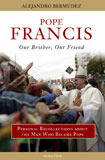
Edited by Alejandro Bermúdez
• Also available in Electronic Book Format
Before becoming Pope Francis, Fr. Jorge Bergoglio, as a Jesuit priest in
Argentina, served the Jesuit order and the Church in a variety of
functions: professor, spiritual director, master of novices, provincial,
and eventually Cardinal Archbishop of Buenos Aires.
This fascinating new look at Pope Francis presents the personal insights
of ten Jesuits, many who have known him since his first days as a
Jesuit, and were interviewed for this book shortly after he was elected
the Pope. Some were his professors, some his peers, and some younger
Jesuits who were his students. Also interviewed for this book are
non-Jesuits, including an Argentine senator, a prominent rabbi, a priest
working in the slums of Buenos Aires that Bergoglio often visited.
Their remarks are focused on different aspects of the man, including his
family background, his abilities, and his personality as administrator,
as friend, as teacher, as a guide, etc. Some of the predominant aspects
of his personality to emerge are his longstanding simplicity and
authentic spirituality; his concern for the individual and the poor; his
desire for the Church to go out to the street to meet the needs of the
people. More controversial issues discussed include his dealing with the
issue of "Liberation Theology" and his relationship with the military
regime in Argentina.
These interviews essentially transmit a mosaic that reveals little-known
insights of the pontiff's personality, of his interior world, his human
abilities, his work habits, his devotions, his concerns, and his
friendships. Thus, they open a fascinating door to a better
understanding of the man whom the Holy Spirit has elected to lead the
Church at this time.
Alejandro Bermúdez, born in Lima, Perú, is the Director
of the largest Catholic news Agency in Spanish, ACI-Prensa, and the
Executive Director of the Catholic News Agency. He is the host of the
show "Cara a Cara" on EWTN in Spanish, and has been a guest commentator
on religious issues for the New York Times. He translated Cardinal Jorge
Bergoglio's book, On Heaven and Earth, into English.
September 10, 2013
Peter Kreeft on Nineteen Kinds of Judgment
From an address presented by Peter Kreeft to the CiRCE Institute Annual Conference in July 2013, and posted in full on the Imaginative Conservative website:
There are at least 19 different kinds of judgment that we should distinguish. I’m sorry I could not find a 20th, to match the number of digits on our fingers and toes. But 19 does match the digits of Frodo Baggins, one of my heroes. (I’m sure you remember Frodo of the Nine Fingers, and Gollum of the Eleven.) The importance of the topic wisely assigned to me—judgment—is obvious. For one thing, making judgments is a privilege of persons only. For another thing it is necessary, both to live well on earth and to enter Heaven.
I will say one thing about each of these 19 kinds of judgments. It may not be the most important or most fundamental thing that can be said about them, but it will be a point I believe is important enough to take two minutes, of a captive audience’s precious time to think about.
The first kind of judgment is judgment as such, judgment in the abstract. By this I mean the logical form of judgments: the affirmation or denial that a predicate belongs to a subject, that some state of affairs is true or is not true. This is “the second act of the mind” in traditional Scholastic logic, and the only one that contains truth. The first act of the mind, simple apprehension or conception, does not contain truth because it merely conceives of concepts, which are neither true nor false, but are the raw material or contents of true or false judgments. Thus neither the concept “apples” nor the concept “fruits” is true or false, but the judgment “Apples are fruits” is true. The third act of the mind, reasoning, moves from the presupposed truth of one or more judgments, as premises, to the truth of another judgment, as the conclusion to be proved. Concepts tell us what, judgments tell us whether, and reasoning tells us why. We understand essences in concepts, existence in judgments, and causes in reasoning.
Because concepts attain only essences while existence is attained only in judgments, this essential logical structure of thought implies the distinction between essence and existence, one of the most important principles of metaphysics and the basis for Aquinas’ best proof for the existence of God: the proof from contingent beings to a necessary being—that is, from the premise of the existence of beings whose essence is not existence to the conclusion of the existence of a being whose essence is existence, as the only adequate answer to the question of why these other existing things exist. If their existence does not come from within their own essence, it must come from outside, from a cause. Only a Being whose essence is existence can explain the existence of beings whose essence is not existence, as their cause. Only a Being that explains itself can explain the beings that do not explain themselves.
The distinction between essence and existence, and between concepts and judgments, also explains why St. Anselm’s famous “ontological argument” is invalid: it confuses essence and existence, treating existence as an essence, a “what”, or a property. My point here is how centrally important it is that only judgments attain ontological existence and logical truth. When we investigate concrete particular judgments rather than the universal, abstract, logical form of judgments, we find that they are made either by humans, or angels, or God, who are the only three kinds of personal beings we know, except for lawyers and Deconstructionists.
Read the entire address. For more about Kreeft's books published by Ignatius Press, visit his author page on Ignatius Insight.
A Postmodern Christianity?
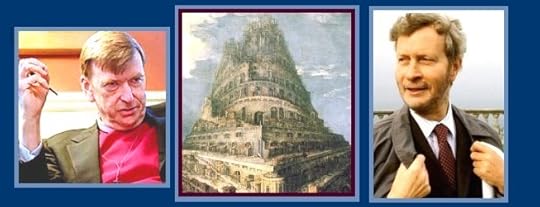
Episcopal Bishop John Shelby Spong, “Tower of Babel” painting, Italian philosopher Gianni Vattimo
A Postmodern Christianity? | Rev. Joseph R. Laracy | HPR
The instantiation of postmodern preferences has had varying effects on ecclesial communities, and has even given rise to new religious groups.
The salient characteristics of postmodern philosophy can be seen in
many aspects of contemporary culture. In particular, the “flight from
being (or truth)” is particularly evident in the areas of politics,
ethics, and religion and is not constrained by the principle of
non-contradiction. The rejection of grand narratives, fragmentation of
knowledge, loss of the human subject, and so-called “death of man,” have
had particularly devastating consequences on both the academic study of
theology, and the practice of religion. Philosophers, theologians, and
indeed entire ecclesial communities have attempted to adapt the
Christian faith to this new perspective.
The instantiation of postmodern preferences has had varying effects
on ecclesial communities, and has even given rise to new religious
groups. Due to the absence of a Magisterium, the Protestant mainline has
been greatly weakened, and the religious culture of the United States
profoundly changed, by postmodern influences. New groups have also
emerged that explicitly appeal to the postmodern mind, such as the
so-called “Emerging Church.” With the formation of the Unitarian
Universalist Church in 1961, the postmodern project finds an even more
profound realization. Finally, one encounters the most extreme
instantiation of the postmodern preferences in the pensiero debole (weak thought) and teologia debole (weak
theology) of the Italian philosopher, Gianni Vattimo. Nonetheless,
whatever the approach may be, any endeavor to marry the postmodern
preferences to Christianity will be deleterious to encountering the
central message of the Gospel summed up in the ancient acronym:
ΙΧΘΥΣ—Jesus Christ, Son of God, Savior 1—“for there is no other name under heaven given among men by which we must be saved.” (Acts 4:12 RSV)
The Postmodern Project
Postmodernity is not simply a philosophical movement
that follows modernism, but rather is a reaction to it. The Italian
archbishop and theologian, Bruno Forte, offers the insightful metaphor
of light and darkness: “The night is that which follows the setting of
the light. If the light is the metaphor of the modern spirit, the night
is the metaphor of postmodernity, that is, of this time in which the
strong reason of modernity is rediscovered as a weak, uncertain, and
restless reason. The night is a time of shipwrecks.” 2
Catholic Funerals and the True Perspective of Faith
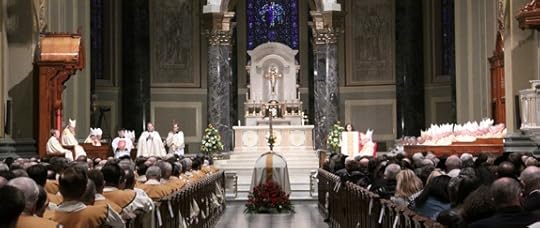
Catholic Funerals and the True Perspective of Faith | William L. Patenaude | CWR
Liturgical abuses during funeral Masses have the potential to obscure important realities of the Faith.
You’re probably witnessing liturgical
abuses when the woman in the pew behind you asks out loud, “What the hell is he
doing?”
This happened at a funeral. A visiting
celebrant (at a parish that I do not belong to) left the sanctuary before we
prayed the Our Father. He repositioned people in the front few pews and lead
the prayer while holding the hands of various family members and pall bearers,
even though the coffin was in the way. This followed and preceded other changes
to the liturgy that brought too much attention to the celebrant, confused the
family, frustrated the servers, and had the rest of us wondering what would
happen next.
Funeral liturgies should be what they
are intended to be: powerful moments of transcendence that point us to
questions that only faith in Jesus Christ can answer—questions about death and
life, sin and salvation, humanity and God. The faithful, the lapsed, and the
uninitiated should experience in ways proper to each the promises and mysteries
of revelation.
The Catechism of the Catholic Church
teaches that “[t]he death of a member of the
community…is an event that should lead beyond the perspectives of this world
and should draw the faithful into the true perspective of faith in the risen
Christ” (par 1687).
This leading us beyond is a means of catechesis and evangelization. But
when funerals become events of liturgical showmanship or poor (if not
heretical) catechesis—or when they center on the sentiments of the survivors
rather than the salvation of the deceased—the Church cannot teach as she ought.
Nor can she evangelize as she must.
A funeral or a Mass of canonization?
Of the Catholic funerals I’ve attended,
many have contained one or two (or more) emphatic statements that the deceased
(along with all family members that have gone before them) are most certainly
with God in heaven. If it were not for the proclamation of Scripture or the
prayers of the liturgy one might never hear the words hope or mercy.
September 9, 2013
The Church and the Experts
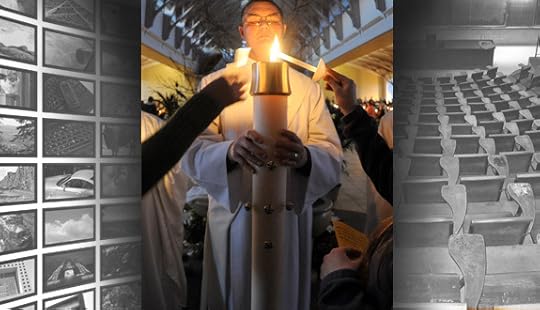
The
Church and the Experts | James Kalb | CWR
Catholics
cannot fight something with nothing, so devotion and integrity must
come before engagement.
The
Church today has a troubled relation to the academy and media.
The
reasons are quite basic. Secular intellectual authorities believe
they stand for a way of understanding the world, free unprejudiced
inquiry carried on by disinterested professionals, that is sufficient
as well as uniquely correct. The Church considers neutral secular
expertise insufficient, since the world is neither neutral, secular,
nor fully comprehensible by human means. She therefore accepts
additional sources of knowledge, such as tradition, revelation, and
natural law, and appeals to them especially in regard to ultimate
issues and questions of value.
In
such cases the kind of expertise on which secular intellectual
authorities rely gives no definite answer. Those authorities
therefore apply some default principle they consider neutral, like
freedom, equality, or efficiency. Because the Church rejects that
solution, they view Catholic doctrine as essentially arbitrary and
oppressive.
That
view dominates public discussion today. The result is that the
secular media never bother to get Catholic beliefs right. They have
no respect for them, and tailor their account of them to the general
story they want to tell about the world. What passes for neutral
rationality, it turns out, has a mythology and plot line of its own.
Mainstream academia is much the same: it is reluctant to accept truth
or authority that elude its control, so it tends toward a reductive,
dismissive, or negative view of religion in general and Catholicism
in particular. Even Catholic colleges, who willingly accept the
authority of governments and accrediting agencies over policies,
programs, and personnel, reject
religious authority and think it a point of honor to hold the
Church at arm’s length.
A
basic part of the problem is the position and function of those who
deal professionally with words and symbols in today’s society, not
just academics and journalists but lawyers, bureaucrats, and
producers of pop culture. The activities of such people are big
business, the potential rewards attract clever and energetic
careerists, and the growth and pervasiveness of government,
bureaucratic organization, and electronic communications give them
unprecedented power.
September 8, 2013
New Evangelization and Ecumenism
New Evangelization and Ecumenism | Msgr. Daniel S. Hamilton | HPR
Ecumenism is the effort to re-compose unity among divided Christians. The “new” evangelization is the effort of the Catholic Church to reach out in new and effective ways, first to its own immense membership…
Ecumenism – or the ecumenical movement – is the effort involving most of the Christian Church communities in the world today to build greater unity with one another and ultimately to achieve the unity of all Christians in one Church. This organized activity is just about a century old, usually dating back from the Edinburgh Missionary Conference of 1910. 1Respecting its final goal, the movement has been to date only minimally successful, although it has brought about greater understanding, cooperation and convergence—meaning a moving toward one another, doctrinally—among the world’s major Christian Church communions.
The position of the Catholic Church—by which phrase we mean the full communion of all the Eastern and Western Churches with the Bishop of Rome, whom we acknowledge as the Successor of St. Peter, with a unique Primacy in the Church’s ministry—is a well-known position within this general movement. We are not seeking to reconstitute a divided church, but to promote and achieve the full communion of all the other Church communions with the one Catholic Church of Christ.
Ecumenism and the new evangelization: how are they related? Ecumenism is the effort to re-compose unity among divided Christians. The “new” evangelization is the effort of the Catholic Church to reach out in new and effective ways first to its own immense membership, some or many of whom now are only nominal Catholics not really accepting and seeking daily to live by the integral teaching of the Gospels. In introducing the idea of the “new evangelization,” Pope Emeritus Benedict XVI invited us to re-propose the Gospel to one another and to those lapsed so that a living faith may once again characterize the Church world-wide. Then beyond our Church borders and even overlapping them are the great de-Christianized masses of the mainly Western world, other already Christian Church communions and the still other huge non-Christian world religions. Last October, the World Synod of Bishops discussed goals in this evangelizing effort, of which we have been already given a glimpse and preparation in the encyclical Porta Fidei (Door of Faith), 2 issued by Pope Benedict for the special Year of Faith, which began October 11, 2012 and is now soon going to come to a close.
Carl E. Olson's Blog
- Carl E. Olson's profile
- 20 followers


